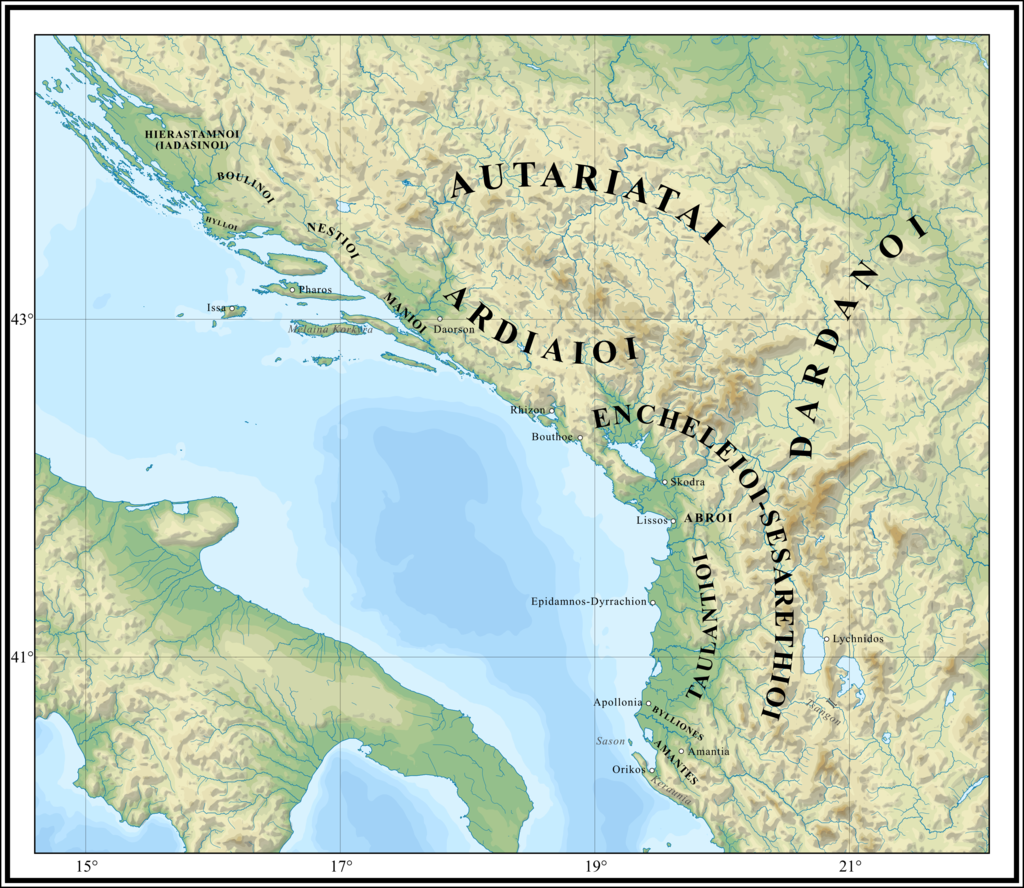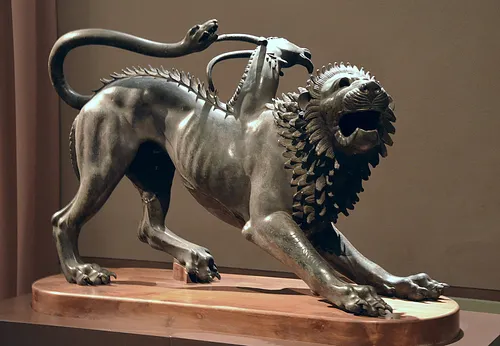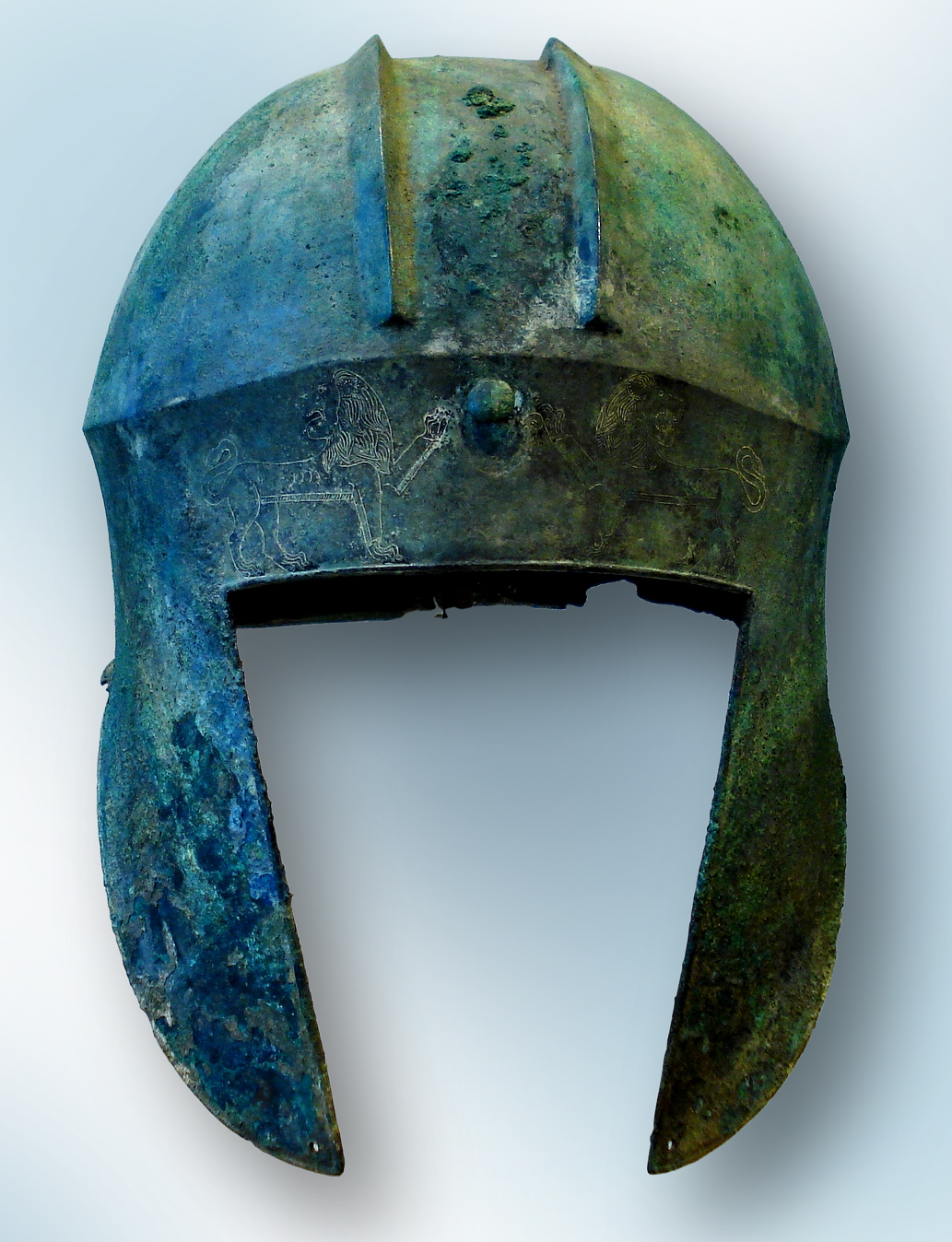As the denomination already alludes, the mediterraneiz-zante fit into the iconographical tradition of the “oriental-izing” EIA Mediterranean if compared to Iron Age Iberian,Etruscan and Italian bronzetti (see below). This groupconsists of schematic and roundish smaller figurines withlittle to no details or decoration, and often with a dynamicposture which serves to give them an expressionistic ap-pearance
126.Apart from the fixture for permanent installation,base plates which would enable movement of the statu-ettes are common. Less time and material went into themaking of the figurines of this group, as they are smallerand numerically fewer: 67 (25%) anthropomorphic whichare known to the author, and between 17 and 4319 (8% or20%) zoomorphic representations. Their often crude ac-complishment and lack of details means that time wassaved on decoration, hinting that it was only deemednecessary that the essentials should be depicted.3.3 Anthropomorphic representationsUta Abini (Fig. 2–4)The iconography of this group seems to follow a clear,repetitive code of representation. Most of the figurines(54%) depict warriors and archers (fig. 2,a–f; 3; 4,a–c.g),and among them, horned headdresses prevail. Theweaponry nearly always consists of a sword and roundshield, while only a single warrior carries a spear (fig. 7,f).Nine figurines of warriors which were found in Abini-Tetihave each four arms and eyes with each carrying twoshields and two swords. The important features of afighter are enhanced in these representations: extra eye-sight, extra strength and extra armament (fig. 2,b).Together with a “minotaur” from the group of uniquefigurines (fig. 2,v) they clearly refer to the supernaturalworld. Raising a hand in a benedictory pose, a trait often observed on Near Eastern cult figurines 20, is a frequentgestus among all archetypes and persists in the following mediterraneizzante style.Female figurines can be identified by breasts, longcloaks and headdresses, as well as often holding smallvessels such as bowls or “incense burners” (fig. 2,j–l).Three women are depicted with a small man on their fold and raising a blessing hand (fig. 2,s–t). The offerentes fi-gurines are represented carrying round objects, vessels,animal hides in one hand, as well as goats on theirshoulders (fig. 2,g–i). One group of bronzetti wearingpointed hats and cloaks (fig. 2,m–o) may representspecialists of divination if compared to later images ofEtruscan haruspices (fig. 16,d.e) and the related deity ofdivination, ‘Tages’.Another group consisting of the biggest figurines onaverage (19.3 to 39 cm), represent a male with a staff......
......
Pistilliform swords: In Sardinia, this type has been found in Siniscola-Oroè, dating to the 11th century BC, andthree figurines of the Uta-artist (see below, fig. 2,a.r) ob-viously shoulder these swords22. These swords represent a21 Manunza 2008, 250–257.22 See also Lo Schiavo 1990a, 219–220.type common to the Atlantic Bronze Age, and the Black-moor/Braud/Huelva-Phase would be the last phase when pistilliform swords were still in use but already “bastante extraordinario”, which means they are mostly earlier than1050–930 cal. BC23.2.
Votive swords: The first original Sardinian swordsare purely symbolic weapons since their size and alloymake them extremely fragile and therefore unusable inactual fighting24. Those artefacts were often fixed on theroof-tops and “tables of offerings” of sanctuaries and aretherefore associated to their construction. In the Albuc-ciu-Arzachena hoard, votive sword fragments were foundwith pieces of Cypriot oxhide ingots in a Nuragic pot of theLBA, 1300–1150 BC25. The fixing of bronzetti to the pointsof votive swords (fig. 3,a; 7,c), as well as the fact thatsome warrior bronzetti also carry votive swords (fig. 4,b.g)underline the cultic and chronological connection of bothobjects26.3.
3.5 Boats (fig. 8)
Depalmas who wrote an outstanding monograph on thisgroup of artefacts44, places them chronologically in theLBA (12th–11th century BC) and the EIA (10th–8th centuryBC). The iconographic complex involves: The boat with ahorned land animal’s head, the plough, land animals onboard, the nuraghe, and birds. Apart from the latter, boatsexclusively transport symbols of on-shore life. Stylisti-cally, they are all of the Uta-Abini school.The figurehead of the bronze boats is always a hornedland animal45, that is: a bull, occasionally incorporatingwater-bird features, a deer or a goat. Scenes with a repre-sentation of two bulls on a yoke, moving in the oppositedirection as the bow, can be found. In one case, a bull islead by its horns by an anthropomorphic figure, which isthe only human passenger known so far (fig. 8,e). Domes-ticated land animals, dogs and pigs, are often on board.Birds are frequently sitting on the mast, the railing or on
nuraghe towers, which also frequently appear on boats(fig. 8,a.c). An exotic exception is one depiction of a boatwith a monkey46.A number of crude clay boat-miniatures, some withzoomorphic figureheads, has been found mostly in nur-aghi. Burnt on the inside, they appear to have been usedas lamps or incense-burners, though the same functioncannot be assumed for the bronze versions that do notshow traces of exposure to fire47. Clay models of boatsfrom the LBA are also known from Crete, Cyprus, Lípariand the Levant48. In particular the Cypriot examples can be seen to have animal figureheads of bulls and birds49. Abig difference with these examples is that Cypriot pas-sengers are always humans and not animals. The Byblos hoard (c. 1500–1200 BC) contains several bronze boats, one of which is steered by a monkey50.The symbolic complex present on the navicelle, in-cluding the protagonist-animals of Sardinian iconography in general, as well as the monkey, but not the nuraghi, ap-pear in EIA Italy, worked into a mediterran eizzante style.The cult-wagon from Lucera51 and the kettle of Bisenzio-Olmo Bello involve most of these symbols, and both in-clude a ploughing scene (fig. 17). Human representationson both of these resemble Sardinian EIA figurines.
......
4. “Philistine crown”: Only one figurine by the Utaartist wears this headdress30 which is known from the “seapeople”, mostly Peleset (Philistines) on the Medinet Haburelief, dated to 1176 BC31. There is archaeological evidencefor the presence of Philistines in the Gulf of Oristano32.
Sardinian EIA imagery, centred around fertility andsexuality, fits in with the iconography of figurative bronzes evolving in Iberia (fig. 15), the alpine region, and Italy (fig. 16; 17) during the “orientalizing” period33. Whilethe Uta-Abini style is self-consciously Sardinian and em-ploys typical Western-Mediterranean elements rooted in LBA iconography alongside many unique Sardinian char-acteristics, the mediterraneizzante style is connected to the Italian mainland and a rather uniform Mediterraneanstyle and iconography, emerging at a time of intensePhoenician trade. This would suggest an origination in the 9th century (confirmed by dating of the Antas bronzetto34,fig. 6,i), a climax of production in the 8th–6th centuries BCwith some late examples in the 5th. No artefact types canbe recognized due to the strong abstraction present in this stye.
Mediterraneizzante (Fig. 6)The iconography of this group is less repetitive, but sex is an obvious theme. Contrary to the former group, phallicrepresentations, hermaphrodites and nudes are present.Warriors are partly nude, ithyphallic, and are never de-picted with horned headgear. All of the defining symbolsof the Uta-Abini group, such as the gamma-hilted daggersand clearly defined swords, along with the emphasized haircuts and dress, have been abandoned. A heavy rup-ture in iconography is obvious. The figurine size in thisgroup has also diminished (4.5–17.3 cm, average 10 cm)
























